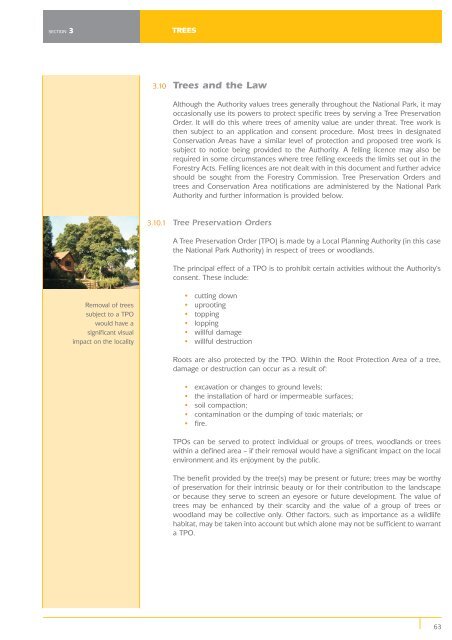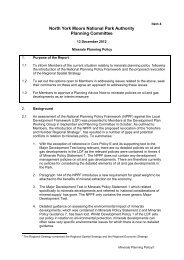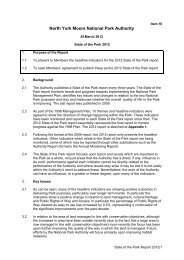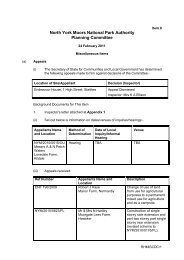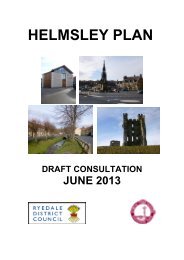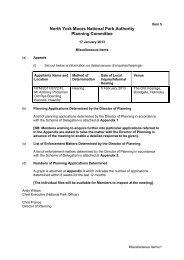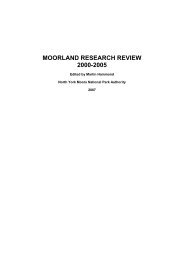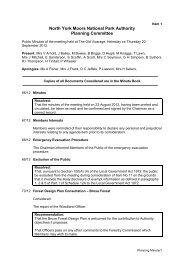Design Guide Part 3 - North York Moors National Park
Design Guide Part 3 - North York Moors National Park
Design Guide Part 3 - North York Moors National Park
- No tags were found...
You also want an ePaper? Increase the reach of your titles
YUMPU automatically turns print PDFs into web optimized ePapers that Google loves.
SECTION 3TREES3.10Trees and the LawAlthough the Authority values trees generally throughout the <strong>National</strong> <strong>Park</strong>, it mayoccasionally use its powers to protect specific trees by serving a Tree PreservationOrder. It will do this where trees of amenity value are under threat. Tree work isthen subject to an application and consent procedure. Most trees in designatedConservation Areas have a similar level of protection and proposed tree work issubject to notice being provided to the Authority. A felling licence may also berequired in some circumstances where tree felling exceeds the limits set out in theForestry Acts. Felling licences are not dealt with in this document and further adviceshould be sought from the Forestry Commission. Tree Preservation Orders andtrees and Conservation Area notifications are administered by the <strong>National</strong> <strong>Park</strong>Authority and further information is provided below.3.10.1Tree Preservation OrdersA Tree Preservation Order (TPO) is made by a Local Planning Authority (in this casethe <strong>National</strong> <strong>Park</strong> Authority) in respect of trees or woodlands.The principal effect of a TPO is to prohibit certain activities without the Authority’sconsent. These include:Removal of treessubject to a TPOwould have asignificant visualimpact on the locality• cutting down• uprooting• topping• lopping• willful damage• willful destructionRoots are also protected by the TPO. Within the Root Protection Area of a tree,damage or destruction can occur as a result of:• excavation or changes to ground levels;• the installation of hard or impermeable surfaces;• soil compaction;• contamination or the dumping of toxic materials; or• fire.TPOs can be served to protect individual or groups of trees, woodlands or treeswithin a defined area – if their removal would have a significant impact on the localenvironment and its enjoyment by the public.The benefit provided by the tree(s) may be present or future; trees may be worthyof preservation for their intrinsic beauty or for their contribution to the landscapeor because they serve to screen an eyesore or future development. The value oftrees may be enhanced by their scarcity and the value of a group of trees orwoodland may be collective only. Other factors, such as importance as a wildlifehabitat, may be taken into account but which alone may not be sufficient to warranta TPO.63


